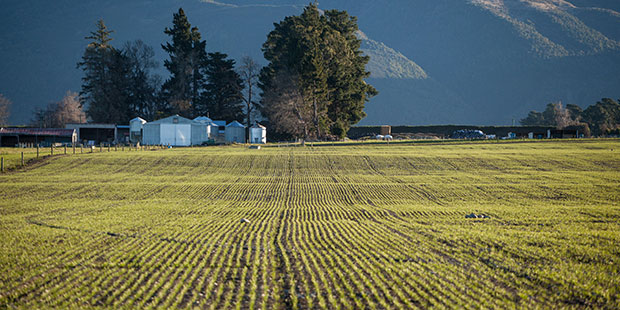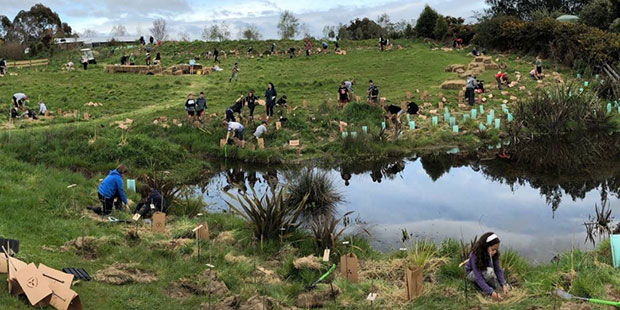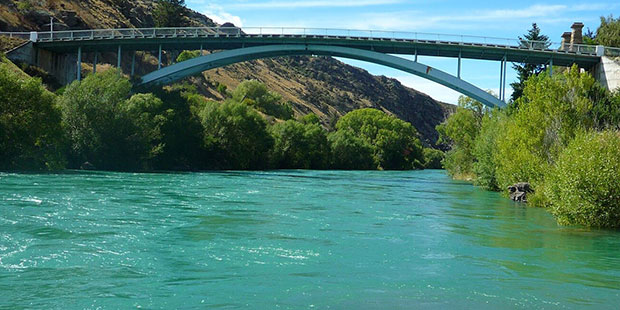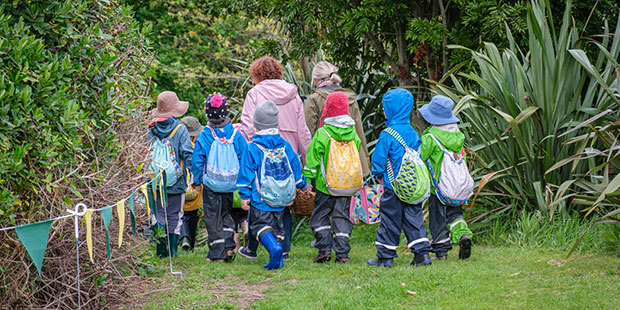How a school saved a stream
A Tauranga school has improved water quality & produced environmentally aware students.


The squelch of gumboots in mud, the tap dance of insects upon a pool and the slippery wrestle of eels through chubby fingers - it may sound like a nostalgic description of childhood for those raised in the country but, for students at Tauranga Waldorf School, this is today’s education.
On any given day, students from this school are in or around the Omatata Stream. The school’s relationship with the stream is special and goes to the heart of its values – centred on the wonder of, and gratitude and reverence for, nature, according to principal Mary Tait-Jamieson.
Today the stream is part of the everyday rhythm of learning and it’s not unusual to see beginner students up to Year 8 exploring the stream and wetland area.
This hasn’t always been the case, however. Since its very early days the school community has always cared for the stream but access to it was hindered by a mountainous wall of weeds, as well as a dangerous silt bottom caused by a dam built decades ago.

Waldorf School. Image / Supplied.
Waldorf School. Image / Supplied.
In 2007, the school community decided to ramp up action to restore the stream’s mana and committed to taking action.
One of the first things it did, with the advice from the BOP Regional Council, was remove the dam to enable free flow and subsequent oxygenation of its waters.
Next on the agenda was weed removal – a much longer process due to the fact the school was averse to using chemicals and uses biodynamic principles to maintain the 6.5ha school grounds.
“It was all gorse, pampas, woolly nightshade, and blackberry. Any invasive weed that you cared to name was there on the banks,” says Tait-Jamieson. “The blackberry foraging that used to go on in the early days of the school was legendary.”

Image / Supplied.
Image / Supplied.
Instead of using chemical sprays, the school covered the ground in black plastic to suffocate weeds into submission, leaving the ground clear to be planted two years later. This process is ongoing today and, as you walk along mature riparian planting, there are areas covered in black plastic doing this crucial job until new plantings begin.
Replacing the weeds was important for water quality because one side of the stream is neighboured by a council drainage reserve which runs up an extremely steep hill to a subdivision. Erosion and subsequent run-off after heavy rain was a concern. It made sense to continue the council’s native plantings into the school and right down to the wetlands and stream.
The regional council helped with the cost of some plants. However the school is also grateful for the help of charitable trust, Trees For Survival, which subsidised a propagation unit for the school. This was big, as it meant the school’s philosophy of experiential learning could happen via the stream and wetland regeneration.

Image / Supplied.
Image / Supplied.
“The restoration of the stream’s mana and riparian planting fitted perfectly with our belief in a rich curriculum where students learn through doing,” says Tait-Jamieson.
“Because of this project, students were able to immerse themselves in the project and their learning. They went out to native forests and collected seeds, propagated them back at school and, when the plants were big enough, they planted them out in the wetland and banks of the stream.”
The stream has become a crucial part the school curriculum. Kindergarten graduates have an outdoor classroom; children are often found beside the stream exploring and searching for eels.
The learning continues at higher school years: “ Year Six students who are learning ecology undertake water sampling of the stream and observe the different insects in the stream – which also tells them about the water quality,” says Tait-Jaimeson.

Image / Supplied
Image / Supplied
“This data is then posted on the city council database. It makes for boring reading, however, as the water is consistently of a high quality.”
“This kind of hands-on learning sets us apart from other schools. Our children do maths and science through discovering their relationship with nature. The stream, the wetland margins and their revitalisation has become a vital part of our curriculum delivery.”
The school’s effort to improve the stream’s water quality and that of the surrounding area has also triggered a conversation on the spiritual aspects of the waterway.
“We were told by local Māori that the stream is on the border between the Ngāti Ranginui and Ngāti Pūkenga Iwi. As a result, the stream and the immediate area around it is not owned by anyone. That is very special to us as a Waldorf School because, if the stream is not owned by anyone, we believe it belongs to everyone.

Mary Tait Jamieson, Principal. Image / Supplied.
Mary Tait Jamieson, Principal. Image / Supplied.
"The restoration of the mana of the stream through the process of improving water quality and native riparian planting means our students feel deeply connected to nature – which they wouldn’t otherwise get if they hadn’t contributed to its rejuvenation. It has meant their learning is deeply felt,” says Tait-Jaimeson.
“If we want our children to save the planet, they have to start by loving it. They need to feel deeply connected to it. When you contribute, you belong.”






